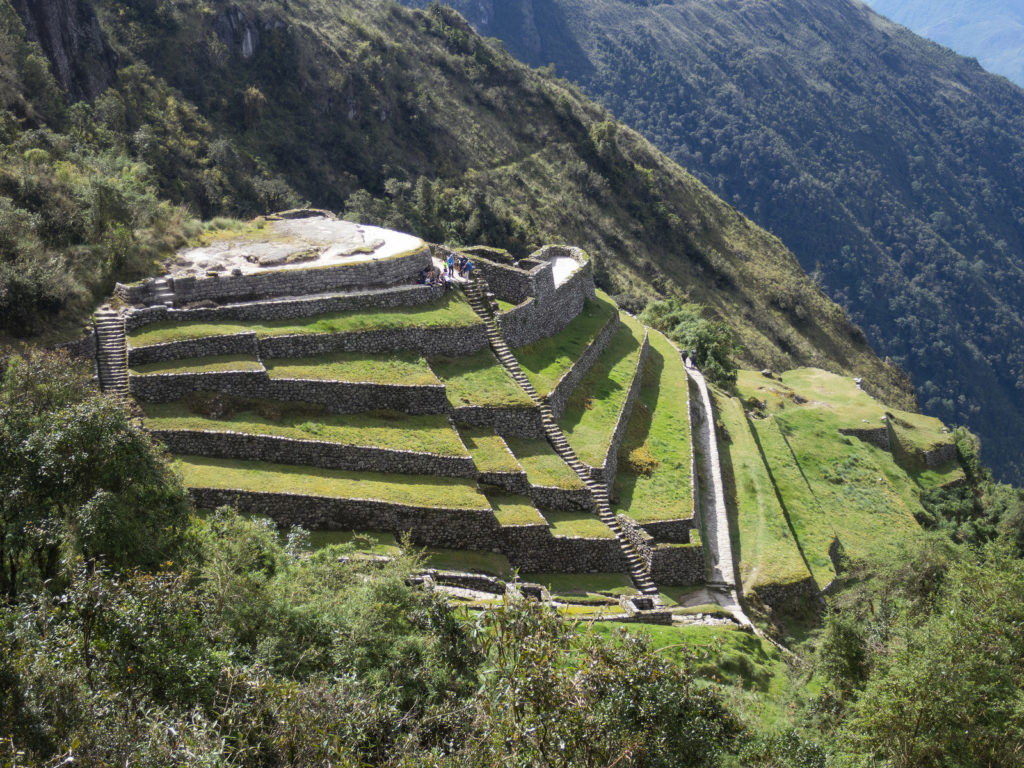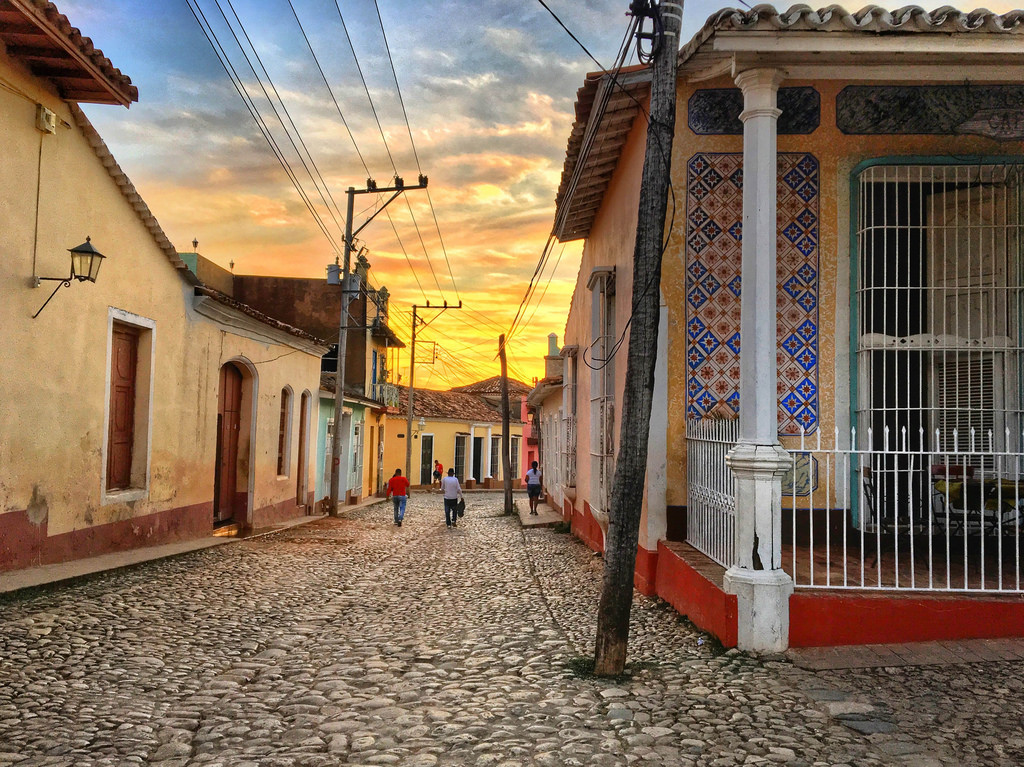
How to Spend 9 Days in Peru: Travel Guide
I spent a week in Peru in November (over Thanksgiving) with a friend. We visited Cusco, Lima, and hiked the Inca Trail to Machu Picchu. Here’s what we did:
How I Got There
We flew Avianca from Dulles to Cusco, transferring through San Salvador and Lima (and snoozing in that airport for a bit since there was a latenight layover).
Where I Stayed
Cusco: Hotel Marqueses: About a 5-minute walk from the Plaza de Armas, this charming little hotel was quiet, clean, and rooms overlooked a nice little interior courtyard with a fountain. Because the hotel was next door to our Inca Trail trekking company, they let us store our bags there during our trip (though they might do that anyway, the staff was super accommodating).
Aguas Calientes: Hostel Viajeros: If you’re coming off four days of Inca Trail hiking, this place is fine (it has toilets and marginally functional showers, which is all you’ll care about at this point). Otherwise steer clear; it’s old, dark, and dingy.
Lima: Hotel Antigua Miraflores: A cute and quirky hotel in Miraflores. It kind of feels like staying in someone’s mansion, and the restaurant is good.
What I Did
Day 1: Cusco
Plaza de Armas: The main square in Cusco, and my favorite spot. Come here any time of day, but at sunset the dusk light is beautiful. There are two churches here — the Cathedral and Iglesia de la Compañía de Jesús, where you can climb up for a good view of the square. There are also a handful of restaurants and bars surrounding the plaza where you can get seats on balconies overlooking everything.
San Cristobal Church: Since we, like many visitors to Cusco, were here to acclimate before hitting the high-altitude Inca trail, we figured we’d start exploring with a bit of a hike up to this church overlooking the city. This. Was. Hard. Altitude is no joke. But the view from this church is a great one, and worth the breathlessness.
San Francisco Church and Monastery: We “popped” in to see the bones in the church’s catacombs, but didn’t realize this meant joining a very long and uninteresting tour. There was some nice art (and some very strange fantastical modern art), but plan for an hour if you’re going to visit/do the tour.
Papachos: A contemporary burger restaurant with balconies overlooking Plaza de Armas. There’s a good alpaca burger here (alpaca is one of your “must try” Peruvian dishes). Gaston Acurio, the chef, is a big deal in Peru.
San Pedro Market: Food, crafts, and alpaca knits. This big market is a great place for snacks or to load up on local knick knacks for people back home.
Qurikancha: You can see layers of history here. It once was the most important Incan temple, covered in gold to honor the sun god. Then Spanish colonialists took all the gold and built a church on the site. Now you can see the ancient temple walls as well as the church, a convent, and a nice little garden.
Pisco Museum: Museum is a strong term, this is really just a bar with an enormous pisco selection and some enlightening wall art about how the drink is made.
Calle del Medio Restaurant: You can try fancy cuy (guinea pig) here. “Fancy” because your dish won’t look like a roasted rat (as other places serve it) … the cuy here comes in more of a filet form, adorned with flowers and salad.
Day 2: Cusco
San Blas: An artsy neighborhood up a hill. It’s an easy walk from the Plaza de Armas and a great place for eating, shopping, and wandering. The small square around the San Blas church has lots of local craft and jewelry vendors, and some shops nearby sell alpaca knits.
Cafe Loco: Supposedly one of the best coffee spots in Cusco. I don’t drink coffee so have to defer to others on this.
Jack’s Cafe: One of the most popular expat hangouts, this place has HUGE sandwiches and is a good brunch spot. There’s no WiFi (they’re so popular they can’t give people more reason to linger longer).
Cava Mora Restobar: A balcony bar and restaurant overlooking Plaza de Armas.
Cicciolina: An upstairs, upscale tapas and wine bar, this place buzzes at dinner time. The food is excellent, and ranges from Italian to Spanish to Peruvian.
Day 3: Inca Trail
Inca Trail: this is the “easy” day. (Easy is all relative.) See my Inca Trail post for full details.
Day 4: Inca Trail
The “challenge” day of the Inca Trail. Basically you climb straight up, then down, a 14,000-foot Andean peak. Diamox is essential.
Day 5: Inca Trail
The “unforgettable” day – you’ll start seeing more and more Incan archaeological sites. But it’s also the longest day, with lots of tromping down stairs.
Day 6: Inca Trail & Machu Picchu
Machu Picchu! Thank god.
Doing the hike, you arrive in the early morning at the Sun Gate. Then you’ll have to climb down and grab tickets and re-enter to tour the site.
Aguas Calientes: The little tourist hub at the base of Machu Picchu. I don’t have a lot of great things to say about this town, except that there are toilets with seats and beds with sheets. And pizza. Believe me, after 4 days of trekking these were all incredible luxuries. Otherwise it’s a town of kitschy souvenirs and tourist restaurants and bars.
Day 7: Machu Picchu & Cusco
Huayna Picchu: You need a timed ticket to climb the iconic mountain at Machu Picchu. It’s about a 45-minute hike up the mountain, once at the top you’ll have awesome views of the site below. There are some viewing ledges where many people stop their climb, though you can go all the way to the boulder-y top. Coming down you have two choices: the short way, which is NOT for anyone who’s scared of heights (these stairs are part of the route), or the long way around the mountain past the Temple of the Moon. The long way is LONG — for me, after 4 days of Inca Trail trekking, the extra 3 hours of hiking up and down through the humid jungle this was the last straw for my legs. So I’d recommend the shorter route unless you find heights debilitating.
Train from Aguas Calientes to Cusco: The tourist train has big windows so you can take in the sights. Unfortunately ours broke down and then had to pull another broken train so it was dark for most of the ride. The train doesn’t connect all the way to Cusco; you have to take a bus for the last 45 mins or so.
McDonalds: Yes, we ate McDonalds in Peru. For Thanksgiving dinner. We were supposed to arrive back in Cusco around 7 pm but because of delays we didn’t get back til closer to 11. So, McDonalds it was.
Day 8: Lima
La Mar Cebicheria: Lima’s not my favorite place, but the food here is definitely worth a stop. This trendy restaurant is in a fringe part of the Miraflores neighborhood, but once inside we were wowed by the cocktails and tasting flights of ceviche. One of the best meals of our Peru trip.
Huaca Pucllana: An ancient, pre-Incan ruin, right in the middle of urban Miraflores. Honestly, historical significance aside, this site was super underwhelming; it looks like a big pile of bricks. Worth a 10 minute visit, or better yet, come at night when the ruins are lit.
Costa Verde and Larcomar: This coastal string of parks and upscale shopping mall built into a sea cliff is a nice way to stretch your legs in Miraflores. There are art installations and workout stations along the way.
Barranco: This is Lima’s coolest hood — for nightlife, come here. Bars and restaurants are hopping, galleries and outdoor art bring the culture, and you’ll find random pop-up street performances.
Orient Express: This tiny bar in Barranco is modeled after a train car. Climb aboard and sip some delicious pisco sours.
Day 9: Lima
Plaza de Armas: Downtown Lima’s central square is grander than its Cusco counterpart.
Convento de San Francisco: The catacombs here are the real deal. You also have to join a tour to visit the skulls and bones in the crypt. Photography isn’t technically allowed here.
La Casa de la Literatura: A museum honoring Peruvian writers, this place is a must for any book nerds.
Hotel Bolivar: This classic hotel in downtown Lima claims to have the best pisco sours in the city.



